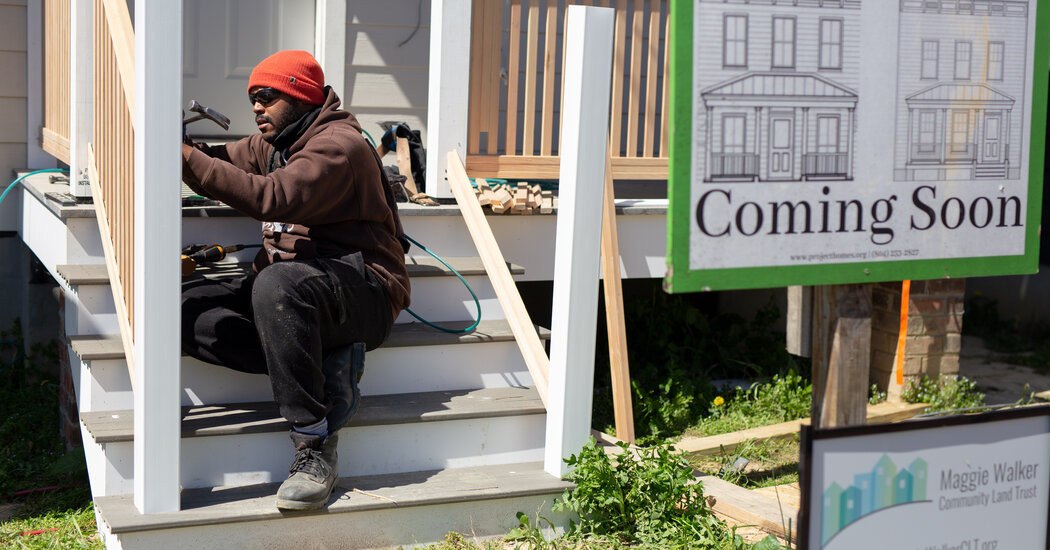Perils of Invisible Government – The New York Times
More than a decade ago, the political scientist Suzanne Mettler coined the phrase “the submerged state” to describe a core feature of modern American government: Many people don’t realize when they are benefiting from a government program.
“Americans often fail to recognize government’s role in society, even if they have experienced it in their own lives,” Mettler wrote. “That is because so much of what government does today is largely invisible.”
Her main examples were tax breaks, including those that help people buy homes, pay for medical care and save for retirement. The concept also included programs so complex or removed from everyday life that many people did not understand them, like federal subsidies for local governments.
Mettler’s thesis is both a defense of government’s role and a criticism of the modern Democratic Party’s preference for technocratically elegant and often invisible policies. It wasn’t always this way, she points out. Social Security, Medicare and the G.I. Bill — as well as New Deal parks, roads and bridges, many with signs marking them as federal projects — helped popularize government action because they were so obvious. If voters don’t know what the government is doing to improve their lives, how can they be expected to be in favor of it?
My colleague Alex Burns, reporting from Richmond, Va., has just published a story about the latest example of the submerged state: the $1.9 trillion Covid-19 rescue plan that President Biden signed last year, known officially as the American Rescue Plan.
Alex writes:
Unlike the New Deal, however, this $1.9 trillion federal investment in American communities has barely registered with voters. Rather than a trophy for Mr. Biden and his party, the program has become a case study in how easily voters can overlook even a lavishly funded government initiative delivering benefits close to home.
Mr. Biden’s popularity has declined in polls over the past year, and voters are giving him less credit for the country’s economic recovery than his advisers had anticipated. In Virginia, Democrats got shellacked in the 2021 off-year elections amid the country’s halting emergence from the depths of the pandemic.
Ambivalence among voters stems partly from the fact that many of the projects being funded are, for now, invisible.
Examples in the American Rescue Plan include community center renovations, housing initiatives and health programs. Collectively, the projects may be valuable. Individually, many may be so modest as to go unnoticed. Americans also may not realize that the projects are connected to a federal law.
“Generally speaking, political leaders don’t get much credit for such federally financed, locally administered initiatives,” Mettler, a professor at Cornell University, told me yesterday.
Biden himself seems to recognize the problem. Speaking to Democratic House members last month about efforts to publicize the plan to voters, he said, “You tell them about the American Rescue Plan, and they say, ‘What the hell are you talking about?’”
Even some potential counterexamples in the law may end up being undermined by their modest size. In Boston, Michelle Wu ran for mayor last year — and won — while promising to eliminate fares from mass transit. That’s a big, easily understood idea that could change how people think about public transportation.
But the details are murkier and less ambitious: With a small portion of its money from the American Rescue Plan, Boston is making only three city bus lines free to ride. It hardly seems like the kind of program that all of Boston will be talking about.
And in Washington
Many Democrats know that voters remain unsure about how their party has used its control of government over the past 15 months to help people. With their poll numbers sagging, Democrats in Congress are trying to figure out what new pieces of legislation they may be able to pass in coming weeks.
“Democrats win elections when we show we understand the painful economic realities facing American families and convince voters we will deliver meaningful change,” Senator Elizabeth Warren wrote this week. “To put it bluntly: if we fail to use the months remaining before the elections to deliver on more of our agenda, Democrats are headed toward big losses in the midterms.”
It’s a reasonable argument. But the party still does not seem to be reckoning with the problems of the submerged state.
Which raises the question: If a policy passes in Washington and nobody can hear it, does it make any political noise?
You can read Alex’s full story here.
THE LATEST NEWS
State of the War
-
Russia test-launched a new intercontinental missile that it said could carry several nuclear warheads, a warning to the U.S. and Europe.
-
Some in the White House worry it’s a sign that Putin’s isolation is making him reckless, The Times’s David Sanger writes.
-
In Ukraine, Russia said it had fired artillery, missiles and bombs at more than 1,100 targets. It also made probing attacks along the eastern front but has not started a full assault.
-
The U.N. said five million people have fled Ukraine — out of a prewar population of 43 million — and more than seven million people are displaced inside the country.
-
Treasury Secretary Janet Yellen walked out of a G20 meeting as Russia’s finance minister spoke.
More on Ukraine
The Virus
Other Big Stories
Opinions
“Destruction’s happening. And we’re just kind of sitting back.” Ten Americans discuss the war in Ukraine.
We need more protected bike lanes, signals and other features to make roads safer for nondrivers, says Farhad Manjoo.
MORNING READS
The new tipping fatigue
You buy a coffee and a muffin, and the barista directs you to a touch screen that asks how much you’d like to tip: 15, 20, 25 percent? The growing prevalence of automated checkouts has made prompts like this so common that some customers say they have gratuity fatigue, Christina Morales writes in The Times.
Many people increased tipping early in the pandemic, acknowledging the heightened risks for food workers. But as the world returns to a semi-normal state, and as inflation pushes prices up, some customers feel as though employers are passing the responsibility of caring for workers onto them.
“It is our social duty to make sure that the person that is feeding us feeds themselves,” Gabriel Ramirez, a smoke shop employee in Los Angeles, said. “Employers shouldn’t be looking at the tip jar and saying, ‘This is how my employee is going to make it this month.’”
Everyone in the Times article expressed support for tipping in places where it’s customary, like sit-down restaurants. But the touch screens are also bringing tipping to businesses where they make less sense. How much should you give at, say, a self-service food counter or when picking up takeout?
Janhavi Bodkhe, a college student in Iowa, said the touch screen at a local movie theater prompted her for a tip. She left 15 percent. “It speaks on your character how much you tip or not,” she said, adding, “I want to be perceived as a good customer.”
PLAY, WATCH, EAT
What to Cook
Check out our Latest News and Follow us at Facebook
Original Source







